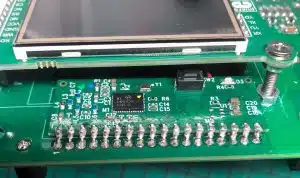 Add My Company
Add My Company
8 ZONE WIRELESS WATER DETECTION ALARM

Upgraded new product!

We have upgraded our original wireless water detection system for homes, office blocks and commercial properties. Our latest leak detection product can now detect water leaks in up to eight different areas. The wireless water detector sensors are easy to fit and do not require an electrician. There is no need to re-tile or pull up floor boards. The wireless sensors are placed in different areas up to 60m away from the main water detection alarm unit. In addition to detecting a water pipe leak, the system can turn off the water supply to stop further water damage. The sensors draw a minimal amount of power and only require two AA batteries which need replacing once every few years.
How do the wireless water detection sensors work?
The moment a sensor detects water, an alert is sent and an audible alarm is trigged. The water detection system can have an optional SMS text messaging unit fitted. This has the advantage of alerting the appropriate people to a water leak in an unmanned area like a plant or comm’s room. When the sensor contacts water, an internal circuit is completed. This triggers the sensor’s integrated RF radio to push a signal to the main alarm unit.

How do wireless water detection sensors prevent water damage?
In 2020-21 England and Wales leaked 51 litres of water per person per day! In 2020, an article stated that leaky pipes and taps have cost Brits £13.6bn ($17.3bn) to repair over the past 12 months. The problem with water damage is the weakening of a building’s structural integrity. Once the wood absorbs water, it can rot and possibly collapse. Untreated water damage can ruin electrical systems, corrode plumbing, destroy ceilings and walls, and cause mold growth.
Just one in 10 Britains have a leak detector installed, and 11% don’t have home insurance that would protect them against leak damage. By having wireless sensors installed in strategic positions this will greatly decrease the chance of water damage happening.
Wireless sensors have the advantage over conventional leak detectors because they keep installation costs down. Fitting of wireless water detection sensors does not require drilling or structural building changes. Installing a wireless water detection unit can also be cheaper in the long term as it provides you with more flexibility if you decide to expand and upgrade. It is easy to fit additional wireless sensors to extra rooms and does not require an electrician to install them. Whilst it is easy to install additional sensors, you do need to make sure that they are placed in the correct area to ensure you have as much coverage as possible. This link from Travellers discusses how wireless water sensors can help prevent property damage caused by water leaks. The article also highlights the benefits of wireless water detection systems and their ease of installation, flexibility, and reliability.
What radio frequency is used in wireless water detection sensors?
There are lots of misconceptions around the use of wireless technology. Some people still believe that it is not secure, unreliable and forever plagued by interference and drop-outs. The RFWD water detection system does not suffer from these problems. It utilises a LoRa Telemetry Module with the latest OFDM, spread spectrum technology and extensive algorithm that enables the sensors to ‘talk’ to the Alarm unit up to 60m with true line of sight.

The RFWD detection unit operates at a frequency of 868Mhz. Different countries around the world utilise ‘license-free’ frequency ranges (bands) for various applications. In Europe 868Mhz is used.

The higher frequency of the radio (i.e., 2.4GHz is > 868MHz) the quicker the wave loses its strength. Higher frequency radios such as 2.4GHz, tend to penetrate poorly through walls, trees and other obstructions. Even in line-of-sight situations higher frequency radios lose strength due to the size of the wave itself. An 868Mhz frequency has a 12-inch radio wave length and can penetrate obstacles more efficiently. Side by side, an 868MHz signal will transmit almost 2.5 times further than a 2.4GHz signal. Additionally, the superior performance characteristics of 868MHz devices tend to require less energy (resulting in lower power requirements) than wireless products in the 2.4Ghz frequency.
If you would like to learn more about the different types of water detection systems do visit our website.
For more information on 8 ZONE WIRELESS WATER DETECTION ALARM talk to CMR Electrical
